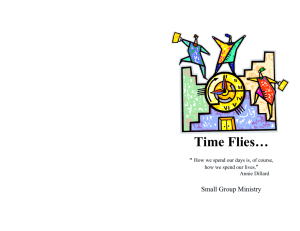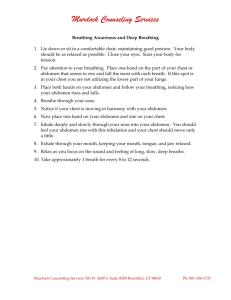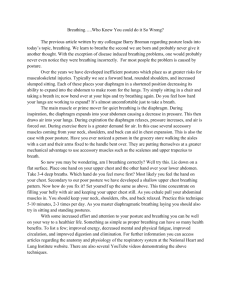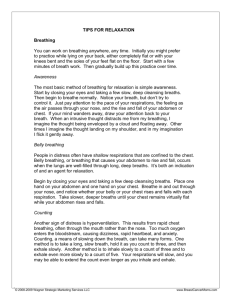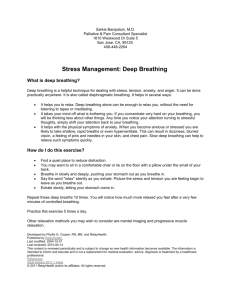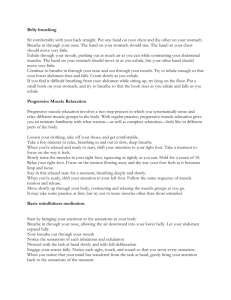Relaxed Breathing
advertisement
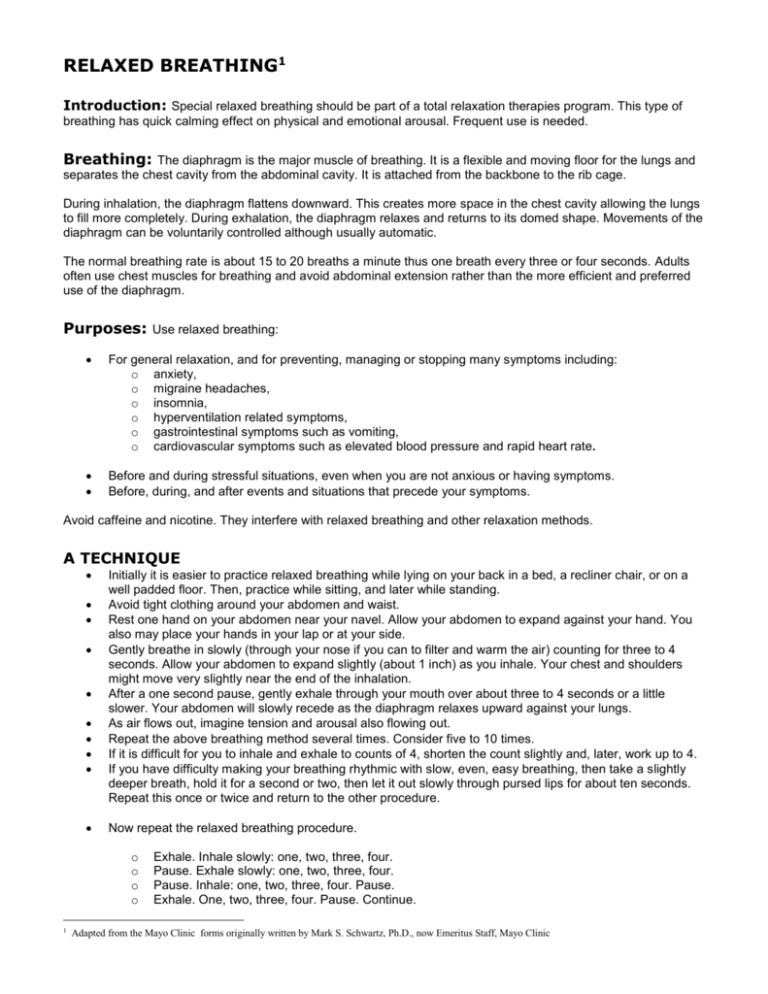
RELAXED BREATHING1 Introduction: Special relaxed breathing should be part of a total relaxation therapies program. This type of breathing has quick calming effect on physical and emotional arousal. Frequent use is needed. Breathing: The diaphragm is the major muscle of breathing. It is a flexible and moving floor for the lungs and separates the chest cavity from the abdominal cavity. It is attached from the backbone to the rib cage. During inhalation, the diaphragm flattens downward. This creates more space in the chest cavity allowing the lungs to fill more completely. During exhalation, the diaphragm relaxes and returns to its domed shape. Movements of the diaphragm can be voluntarily controlled although usually automatic. The normal breathing rate is about 15 to 20 breaths a minute thus one breath every three or four seconds. Adults often use chest muscles for breathing and avoid abdominal extension rather than the more efficient and preferred use of the diaphragm. Purposes: Use relaxed breathing: For general relaxation, and for preventing, managing or stopping many symptoms including: o anxiety, o migraine headaches, o insomnia, o hyperventilation related symptoms, o gastrointestinal symptoms such as vomiting, o cardiovascular symptoms such as elevated blood pressure and rapid heart rate. Before and during stressful situations, even when you are not anxious or having symptoms. Before, during, and after events and situations that precede your symptoms. Avoid caffeine and nicotine. They interfere with relaxed breathing and other relaxation methods. A TECHNIQUE Initially it is easier to practice relaxed breathing while lying on your back in a bed, a recliner chair, or on a well padded floor. Then, practice while sitting, and later while standing. Avoid tight clothing around your abdomen and waist. Rest one hand on your abdomen near your navel. Allow your abdomen to expand against your hand. You also may place your hands in your lap or at your side. Gently breathe in slowly (through your nose if you can to filter and warm the air) counting for three to 4 seconds. Allow your abdomen to expand slightly (about 1 inch) as you inhale. Your chest and shoulders might move very slightly near the end of the inhalation. After a one second pause, gently exhale through your mouth over about three to 4 seconds or a little slower. Your abdomen will slowly recede as the diaphragm relaxes upward against your lungs. As air flows out, imagine tension and arousal also flowing out. Repeat the above breathing method several times. Consider five to 10 times. If it is difficult for you to inhale and exhale to counts of 4, shorten the count slightly and, later, work up to 4. If you have difficulty making your breathing rhythmic with slow, even, easy breathing, then take a slightly deeper breath, hold it for a second or two, then let it out slowly through pursed lips for about ten seconds. Repeat this once or twice and return to the other procedure. Now repeat the relaxed breathing procedure. o o o o 1 Exhale. Inhale slowly: one, two, three, four. Pause. Exhale slowly: one, two, three, four. Pause. Inhale: one, two, three, four. Pause. Exhale. One, two, three, four. Pause. Continue. Adapted from the Mayo Clinic forms originally written by Mark S. Schwartz, Ph.D., now Emeritus Staff, Mayo Clinic


